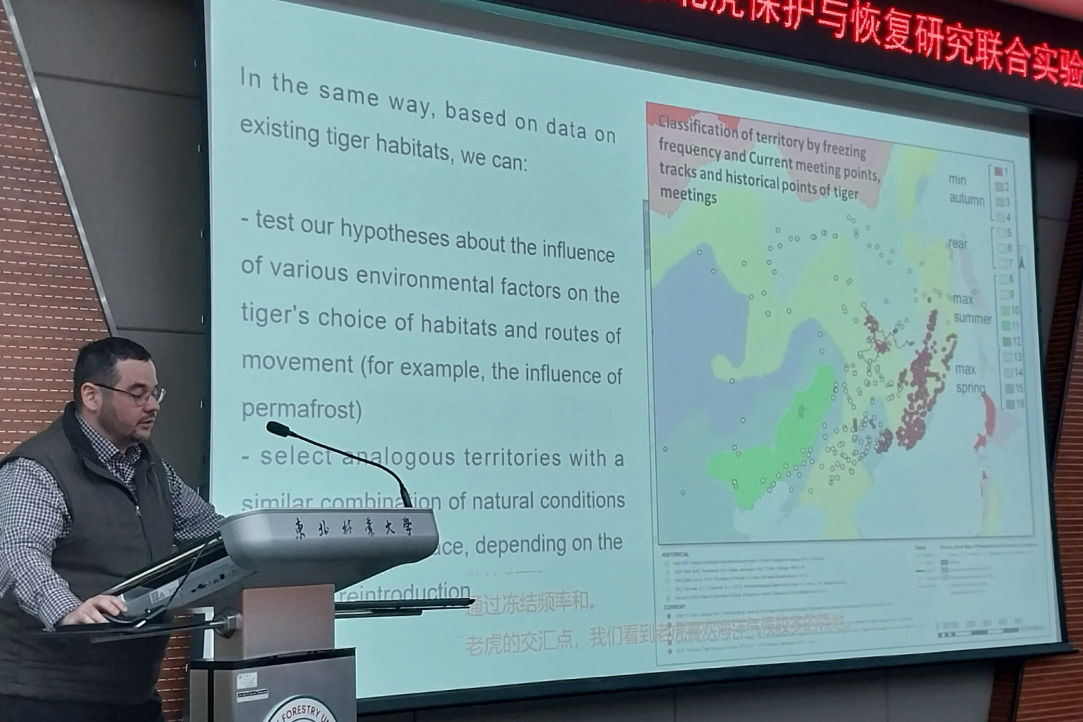The Workshop on Amur Tiger and Leopard Conservation Research Was Held in Harbin
The laboratory staff took part in the Seminar on the conservation of the Amur Tiger and Leopard, held from March 13 to 16 in Harbin (Heilongjiang Province, China), at the Northeastern University of Forestry with the support of the International Society of Zoological Sciences and the Chinese Wildlife Conservation Association.

The purpose of the seminar was to exchange research ideas amongst international feline experts, and discuss on setting up and running the "Joint Sino-Russia Research Laboratory for Amur Tiger Conservation and Restoration", established at the Northeastern University of Forestry. On behalf of the Russian side, the laboratory was co–founded by the A.N. Severtsov Institute of Ecology and Evolution, a scientific partner of the International Laboratory of Landscape Ecology HSE. Specific objectives include seeking to resolve common problems faced by big cat conservation research globally, prompt exchange of frontier conservation theory and technology, and to push trans boundary cooperation for the conservation of big cat populations and their habitats. During the seminar, leading researchers from China and Russia presented the results in the field of monitoring tiger and leopard populations (genetics, parasitology, behavior).
Robert Sandlerskiy, Head of the HSE Laboratory of Landscape Ecology, presented the report “Landscape factors analysis as the basically ones for the species conservation–on its range scale”, which demonstrated the results of the Laboratory's work related to the development of methods for analyzing spatial structure landscape and landscape typicality/diversity. The methods developed in the laboratory for assessing the geographical representativeness of ecological and climatic stations and protected natural areas can be used to search for analogous territories and typical combinations of habitats during the reintroduction of the Amur tiger and other animal species.
Ivan Kotlov, the researcher of the laboratory, presented the report Modeling of habitats, green corridors, and its importance, which demonstrated the results of long-term Russian-Chinese studies of the territory of the Small Khingan and modeling the suitability of its habitats for the reintroduction of the Amur tiger.
After the seminar, the laboratory staff took part in the Russian-Chinese expedition of the Institute of Natural Resources and Ecology of the Academy of Sciences of Helundjiang Province. As part of the expedition, the verification of the previously calculated system of ecological corridors (paths along which animals can move from one comfortable habitat to another) was carried out. Field studies were aimed at describing the intersections of corridors with public roads to assess their actual suitability (the presence of road barriers, the openness of the terrain, the intensity of traffic, etc.) for animals to cross anthropogenic habitats.
Laboratory Head
Ivan Kotlov
Research Fellow
